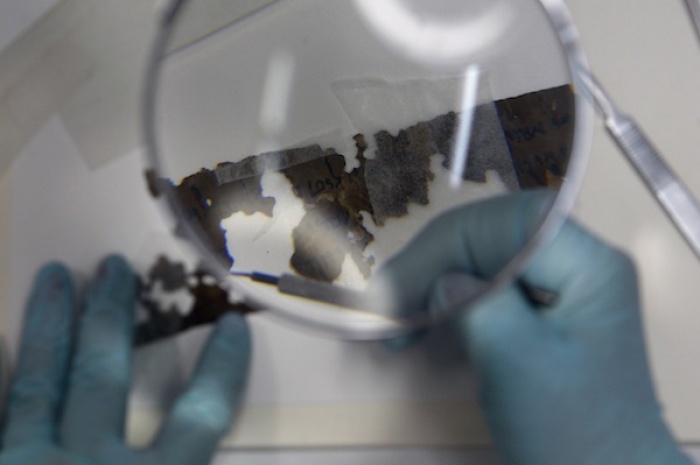1,500-Year-Old Burned Parchment Deciphered as Book of Leviticus, Contains God's Instructions to Moses
Dead Sea Discovery Considered Most Important Find Since Dead Sea Scrolls

Researchers have finally been able to decipher, using hi-tech technology, a burned parchment originally discovered 45 years ago at the Dead Sea, and found it to be a part of the book of Leviticus from a 1,500-year-old Torah scroll.
"The deciphering of the fragment, which was a puzzle for us for 45 years, is very exciting," said Sefi Porath, who led the Ein Gedi excavations, according to The Jerusalem Post.
Live Science noted that the parchment is the oldest piece discovered from a Hebrew Bible since the Dead Sea Scrolls, which date back close to 2,000 years ago.
The scroll is so badly charred that it is illegible to the naked eye, and for decades it was impossible for researchers to pull out enough information from the parchment.
"This discovery absolutely astonished us; we were certain it was just a shot in the dark but decided to try and scan the burnt scroll anyway," said Pnina Shor, curator and director of the IAA's Dead Sea Scrolls project.
Scientists used a microcomputed tomography machine to scan the scrolls, which according to Brent Seales, a professor of computer science at the University of Kentucky, is "just like what they do in the doctor's office but at a very high resolution, probably a hundred times more accurate than the medical procedures that we do."
The software was then able to decipher the first eight verses of Leviticus, the third book of the Hebrew Bible. The verses include God giving instructions to Moses, and begin:
"The Lord called to Moses and spoke to him from the tent of meeting. He said, "Speak to the Israelites and say to them:" 'When anyone among you brings an offering to the Lord, bring as your offering an animal from either the herd or the flock,'" (Leviticus 1:1-2).
Seales explained that the researchers did not even know they would discover writing on the parchment, and so "it was absolutely a big mystery revealed right at the lab."
Porath added that Ein Gedi, where the scroll was discovered, was a prosperous Jewish village in the Byzantine period during the fourth through seventh centuries CE.
"The settlement was completely burned to the ground, and none of its inhabitants ever returned to reside there again, or to pick through the ruins in order to salvage valuable property," he said.
"In the archeological excavations of the burnt synagogue, in addition to the charred scroll fragments, we found a bronze seven-branched menorah, the community's money box containing 3,500 coins, glass and ceramic oil lamps, and vessels that held perfume."
The Dead Sea Scrolls, which are the oldest written records of the Old Testament ever found, offer insight into the customs and religion of ancient Israelis, including information on the birth of Christianity.
The scrolls, many of which are believed to have been written between the third and first centuries BCE, were hidden in 11 caves in the Judean desert on the shores of the Dead Sea, around 68 BCE, apparently to protect them from Roman armies.
Back in September 2011, a joint effort by Israel's national museum and Google made the ancient texts available online for all to see.





























